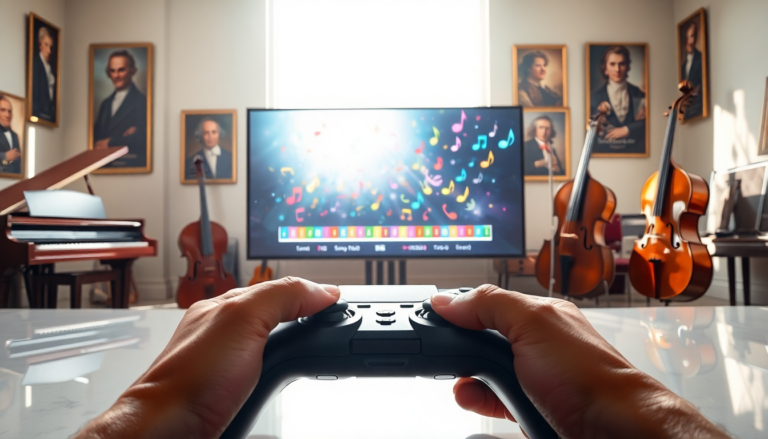Argomenti trattati
Have you ever noticed how classical music has found its way into the world of video games? It’s not just a backdrop; it’s a rich tapestry that enhances our gaming experiences. From the nostalgic sounds of arcade classics to the modern beats of rhythm games, composers have cleverly woven these timeless pieces into soundtracks. This article dives into the fascinating fusion of classical music and gaming, with a spotlight on how rhythm games like Pump it Up are redefining the genre.
Classical Roots in Gaming
Since the dawn of video games, classical music has played a vital role in evoking emotions and stirring nostalgia. Developers have long turned to the masterpieces of legends like Beethoven and Chopin, using their compositions not just as a tribute but as a powerful storytelling device.
Rhythm games stand out in this arena, offering players an engaging way to interact with classical music. Titles like Pump it Up and its latest version, Pump it Up Rise, showcase a diverse range of classical remixes, allowing players to experience these enduring works through an interactive and dynamic lens.
In July, Pump it Up Rise made its debut on Steam, reigniting interest in a series that has been challenging its competitors since 1999. With a soundtrack brimming with classical remixes, players are invited to dance along to modern interpretations of iconic compositions.
The Evolution of Remixes in Rhythm Games
What sets Pump it Up apart from traditional rhythm games is its unique blend of South Korean hip hop influences with classical music. The artist collective BanYa has been pivotal in this innovative approach, remixing classical pieces to fit the rhythm game format seamlessly.
Tracks like “The Devil” fuse electric guitar with Edvard Grieg’s “In the Hall of the Mountain King,” while “Turkey March” offers a fresh twist on Mozart’s “Rondo alla Turca.” These remixes not only honor the original compositions but also introduce them to a new generation of gamers eager for a unique experience.
One standout track, “Beethoven Virus,” takes the 3rd movement of Beethoven’s Pathetique and transforms it into an exhilarating remix that keeps the essence of the strings intact while injecting a modern flair. These interpretations provide players with a unique opportunity to connect with classical music, proving that these timeless pieces can still resonate within contemporary culture.
The Wider Impact of Classical Music in Gaming
But the influence of classical music doesn’t stop with Pump it Up. Other rhythm games like Taiko no Tatsujin and Maestro have also embraced orchestral pieces, showcasing a rich and varied musical landscape. The familiarity of these compositions aids gamers in navigating new challenges while stirring emotions tied to the original works.
Additionally, the public domain status of many classical pieces makes it easier for developers to incorporate these tracks into video games. Unlike contemporary music, which often grapples with copyright restrictions, classical compositions allow creators to enhance their soundtracks without the headaches of licensing issues.
The charm of classical music in gaming lies in its ability to evoke nostalgia and enhance the gameplay experience. As players engage with these familiar tunes, they often become deeply immersed in the game’s narrative, turning each session into a memorable adventure.
As we witness the resurgence of classical music in gaming, it’s clear that this genre will continue to play a crucial role in crafting immersive experiences. The blend of a rich musical history and engaging gameplay ensures that classical music will remain a vital part of gaming culture for years to come. So, whether you’re a seasoned gamer or a newcomer, keep an ear out for those classical tunes; they’re not just music—they’re a bridge to a beautiful legacy.

